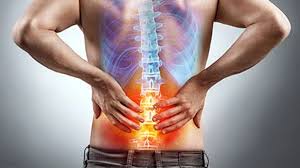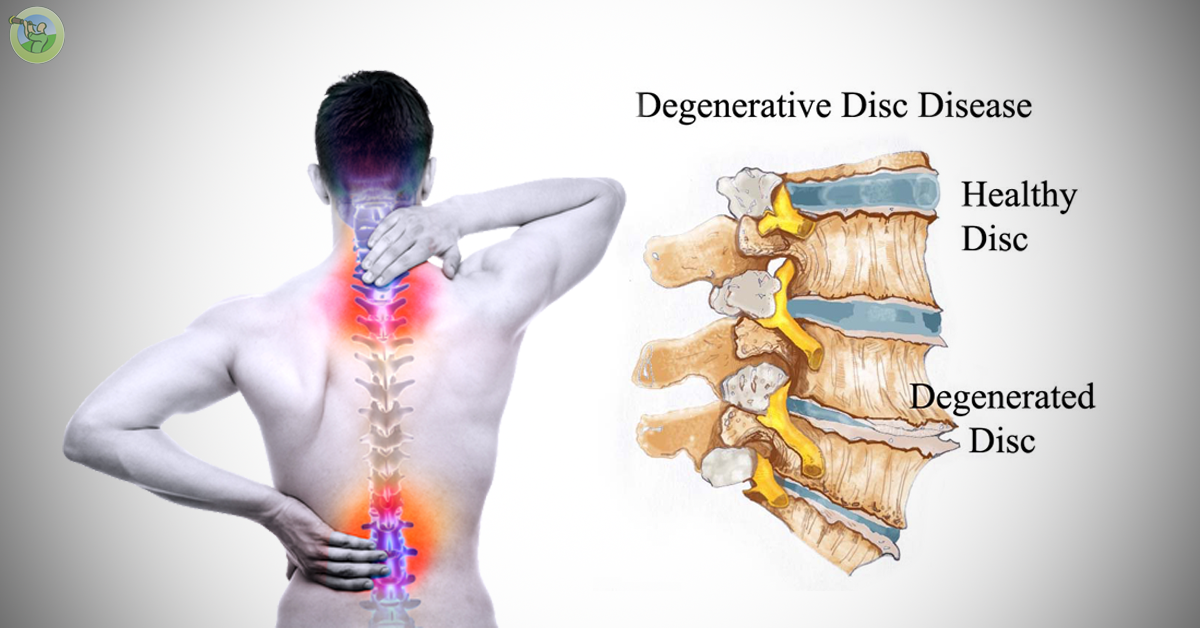Causes of back pain include muscle strains, herniated discs, and poor posture. Back pain can also be caused by underlying medical conditions and lifestyle factors such as obesity or smoking.
It is important to identify the cause of back pain in order to effectively treat and manage it.
Understanding The Anatomy Of The Spine
When it comes to understanding back pain, it’s important to have a basic understanding of the anatomy of the spine. The spine, also known as the vertebral column, is a complex structure that not only provides support to the body but also allows for movement and protection of the spinal cord. It is made up of various components that work together harmoniously to maintain spinal health and function.
Key Components Of The Spine
The spine is composed of a series of individual bones called vertebrae. These vertebrae are stacked on top of each other, forming the flexible and stable backbone of the body. Each vertebra has a particular shape and structure which contributes to its specific function and role within the spine. Let’s take a closer look at the key components of the spine:
- Cervical Vertebrae: These are the seven vertebrae located in the neck region of the spine. They provide support to the head and allow for a wide range of motion.
- Thoracic Vertebrae: There are twelve vertebrae in the thoracic region, which is the upper and middle part of the back. These vertebrae connect to the ribs and provide stability to the upper body.
- Lumbar Vertebrae: The lumbar region consists of five vertebrae, commonly known as the lower back. These vertebrae are larger and help to bear the weight of the upper body.
- Sacral Vertebrae: There are five fused sacral vertebrae that form the sacrum, a triangular-shaped bone at the base of the spine. The sacrum connects the spine to the pelvis and plays a vital role in providing support and stability to the lower body.
- Coccyx: The coccyx, also known as the tailbone, is made up of four fused coccygeal vertebrae. While it may seem small and insignificant, the coccyx serves as an attachment point for various ligaments and muscles.
Importance Of Spinal Alignment
Spinal alignment refers to the correct positioning and curvature of the vertebrae in the spine. Maintaining proper spinal alignment is crucial for overall spinal health and preventing back pain. When the spine is misaligned, it can lead to excessive stress and strain on the structures of the back, including the discs, muscles, and ligaments.
An aligned spine allows for optimal distribution of forces throughout the body, promoting efficient movement and reducing the risk of injury. On the other hand, poor spinal alignment can lead to postural issues and imbalances, which can contribute to the development and persistence of back pain.
By understanding the anatomy of the spine and the importance of spinal alignment, we can begin to appreciate the significance of maintaining a healthy back. Awareness of these key concepts empowers us to take proactive steps in ensuring the well-being of our spine, reducing the likelihood of experiencing debilitating back pain.
Posture And Back Pain

One of the primary causes of back pain is poor posture. Many people experience back pain at some point in their lives, often due to factors such as sedentary lifestyles, excessive screen time, and improper body mechanics. The impact of poor posture on the back is not to be underestimated, as it can lead to an array of discomforts, ranging from minor backaches to chronic pain. In this section, we will explore the relationship between posture and back pain, and provide practical tips on how to maintain proper posture to alleviate and prevent back pain.
Impact Of Poor Posture On The Back
Poor posture can adversely affect the alignment and stability of the spine, leading to various musculoskeletal issues. Here are some of the ways in which poor posture can impact the back:
- Increased stress on the spine: Slouching or hunching over can strain the muscles, ligaments, and discs in the back, resulting in pain and discomfort.
- Spinal misalignment: Sitting or standing with improper posture can cause the spine to lose its natural curvature, leading to misalignment and potential nerve impingement.
- Weakened core muscles: Poor posture can weaken the core muscles, including those in the abdomen and lower back, which are crucial for maintaining a stable and properly aligned spine.
- Restricted blood flow: Certain postural habits, such as crossing the legs while seated, can impede blood circulation in the back, causing muscle stiffness and reducing nutrient and oxygen supply to the affected area.
How To Maintain Proper Posture
Maintaining proper posture is essential for preventing and alleviating back pain. Here are some tips to help you maintain good posture throughout the day:
- Sit with back support: When seated, choose a chair that provides adequate support for your lower back. If necessary, use a cushion or lumbar roll to maintain the natural curve of your spine.
- Keep shoulders relaxed: Avoid tensing or hunching your shoulders. Instead, keep them relaxed and gently pulled back.
- Engage your core: Strengthening the core muscles can help maintain a stable spine. Practice exercises such as planks and abdominal crunches to strengthen your core.
- Stand tall: While standing, distribute your body weight evenly on both feet, with your knees slightly bent and your feet hip-width apart. Avoid slumping or leaning to one side.
- Take frequent breaks: If you have a desk job or spend long hours sitting, make sure to take regular breaks to stretch and walk around. This can help relieve pressure on your back.
By incorporating these habits into your daily routine, you can significantly improve your posture and reduce your risk of developing back pain.
Lifestyle Factors And Back Pain

Back pain is a common complaint that affects millions of people worldwide, leading to discomfort and decreased quality of life. While there can be several causes of back pain, lifestyle factors play a significant role in its development and severity. In this blog post, we will explore two crucial lifestyle factors that contribute to back pain and discuss their effects on the back.
Sedentary Lifestyle And Its Effects On The Back
A sedentary lifestyle, characterized by prolonged sitting or inactivity, not only affects cardiovascular health but can also have detrimental effects on the back. When we spend hours at a desk or sitting in front of a screen, our muscles become weak and tight, especially in the back and core areas. This muscle imbalance can lead to increased pressure on the spine and discs, resulting in pain and discomfort.
Moreover, sitting for extended periods puts excess stress on the lower back, as the natural S-shaped curve of the spine is compromised. This can lead to the development of a poor posture, leaving the back vulnerable to strain and injury. Additionally, a sedentary lifestyle often leads to weight gain, further exacerbating back pain. The extra weight can place additional pressure on the spine, leading to conditions such as herniated discs or pinched nerves.
Importance Of Regular Exercise For Back Health
A crucial factor in maintaining a healthy back is engaging in regular exercise. Adopting an active lifestyle helps strengthen the muscles supporting the spine, improves flexibility, and enhances overall spinal health. By incorporating exercise routines that target the back, such as stretching, strengthening, and aerobic exercises, individuals can significantly reduce the risk of back pain.
Regular exercise helps to alleviate the muscle imbalances caused by a sedentary lifestyle. It promotes the development of strong and flexible back muscles, which provide support and stability to the spine. Furthermore, exercise helps to improve posture, creating a healthier alignment of the spine and reducing the strain on back muscles and ligaments.
Engaging in cardiovascular exercises, such as walking, swimming, or cycling, helps improve blood circulation and the delivery of essential nutrients to the spine. This, in turn, promotes healing and reduces inflammation, decreasing the likelihood of back pain episodes.
In conclusion, leading a sedentary lifestyle and neglecting regular exercise can have adverse effects on back health. By being aware of these lifestyle factors and making conscious efforts to incorporate physical activity into our routines, we can significantly reduce the risk of back pain and improve overall well-being.
Work-related Factors Leading To Back Pain
Back pain is a common ailment that affects millions of people worldwide. While there can be several causes of back pain, work-related factors play a significant role in its development. Many individuals spend long hours seated at desks, performing repetitive tasks, and adopting poor posture, all of which can contribute to back pain. In this section, we will explore the work-related factors that can lead to back pain and understand how they can be addressed to promote a healthier workplace environment.
Ergonomics In The Workplace
One crucial aspect of preventing work-related back pain is the implementation of proper ergonomics in the workplace. Ergonomics is the science of designing workspaces and equipment to fit the individual, ensuring comfort, efficiency, and reducing the risk of musculoskeletal disorders, including back pain.
When it comes to creating an ergonomic workspace, several considerations must be made:
- Desk and Chair Setup: The height of the desk and chair should be adjusted to allow for proper alignment of the spine. The feet should be flat on the floor, knees bent at a right angle, and the back should be supported by the chair. The keyboard and mouse should be at a comfortable height to avoid straining the shoulders and arms.
- Monitor Placement: The computer monitor should be positioned at eye level to prevent excessive neck and shoulder strain. It is recommended to place the monitor an arm’s length away to minimize eye strain.
- Lumbar Support: Providing adequate lumbar support in chairs can help maintain the natural curve of the lower back and reduce stress on the spinal discs.
- Workstation Organization: Organizing the workstation in a way that frequently used items are within reach can prevent unnecessary twisting and reaching movements that strain the back.
Common Workplace Habits That Contribute To Back Pain
While implementing proper ergonomics is essential, there are also common workplace habits that individuals should be aware of as they can contribute to the development of back pain:
- Prolonged Sitting: Spending extended periods sitting at a desk can lead to muscle imbalances, poor circulation, and increased pressure on the discs in the back. Taking regular breaks to stretch, walk, or perform light exercises can help alleviate these issues.
- Repetitive Tasks: Performing repetitive tasks, such as typing or lifting heavy objects, can strain the muscles and ligaments in the back. It is important to vary tasks and take breaks to avoid overloading specific muscle groups.
- Poor Posture: Slouching or hunching over desks, chairs, or computers can place excessive strain on the back muscles and discs. Maintaining good posture, such as sitting up straight with shoulders back, can help distribute the load evenly on the spine.
- Carrying Heavy Loads: Carrying heavy bags, equipment, or materials can put excessive strain on the back. It is crucial to use proper lifting techniques, such as bending the knees and using the legs, to minimize the risk of injury.
By becoming aware of these common workplace habits and making necessary adjustments, individuals can significantly reduce their risk of developing work-related back pain. Prioritizing ergonomics, taking regular breaks, varying tasks, and maintaining good posture are simple yet effective measures that can contribute to a healthier and pain-free work environment.
Stress And Back Pain Connection

Back pain can be debilitating, affecting not only our physical well-being but also our mental state. One factor that often contributes to this discomfort is stress. The relationship between stress and back pain is significant, and understanding this connection is crucial for effective pain management and prevention.
The Relationship Between Stress And Back Pain
Research has shown that there is a strong correlation between stress levels and the intensity and frequency of back pain. When we experience stress, our bodies produce stress hormones such as cortisol, which can lead to muscle tension and inflammation. This tension and inflammation can directly impact our back muscles, causing discomfort and pain.
Moreover, stress can also indirectly contribute to back pain. When we are stressed, we tend to adopt poor posture and body mechanics, slouching or hunching over, which puts strain on the muscles and ligaments supporting the spine. Over time, this strain can lead to muscle imbalances, spinal misalignment, and increased pressure on the spinal discs, resulting in chronic back pain.
Effective Stress Management Techniques
To alleviate or prevent back pain caused by stress, incorporating effective stress management techniques into our daily lives is crucial. Here are some strategies that can help:
- Regular Exercise: Engaging in regular physical activity not only helps release endorphins, our body’s natural painkillers, but also reduces stress levels. Choose activities that you enjoy, such as yoga, swimming, or walking, as these can also improve flexibility and strengthen the muscles supporting your back.
- Deep Breathing: Practicing deep breathing exercises, such as diaphragmatic breathing, can help activate the body’s relaxation response, reducing muscle tension and promoting a sense of calm. Take slow, deep breaths, filling your belly with air, and exhale slowly, focusing on releasing any tension in your body.
- Progressive Muscle Relaxation: This technique involves systematically tensing and then relaxing each muscle group in your body, helping to alleviate physical tension. Starting from your toes and working your way up to your head, tense each muscle group for a few seconds before releasing the tension, and notice the difference in how your body feels.
- Mindfulness and Meditation: Practicing mindfulness and meditation can help calm the mind, reduce stress, and promote body awareness. Find a quiet space, close your eyes, and focus on your breath or a specific object, allowing any stressful thoughts or sensations to pass without judgment.
By incorporating these stress management techniques into your daily routine, you can not only reduce stress levels but also alleviate or prevent back pain associated with stress. Remember, stress management is a continuous process, and finding what works best for you may take time, so be patient and consistent with your practice.
Impact Of Obesity On Back Pain
Obesity often contributes to back pain due to increased strain on the spine. Excess weight can put pressure on the vertebrae and discs, leading to discomfort and potential long-term spinal issues.
Understanding The Link Between Obesity And Back Pain
Excessive weight can have a significant impact on back health and often exacerbates or even causes chronic back pain. The link between obesity and back pain is multifaceted, with several factors contributing to the development of this ailment. Understanding how obesity affects the spine and the associated detrimental effects is crucial in finding effective strategies for weight management to alleviate back pain. Let’s delve further into the connection between obesity and back pain to gain insights into the strategies that can help reduce this discomfort.
Strategies For Weight Management To Reduce Back Pain
1. Eat A Balanced Diet:
Adopting a balanced, nutritious diet is key to weight management and reducing back pain. Opt for whole foods rich in essential nutrients, such as fruits, vegetables, lean proteins, and whole grains. Avoid processed and high-sugar foods, as these contribute to weight gain and inflammation that can exacerbate back pain.
2. Engage In Regular Physical Activity:
Regular exercise is vital not just for weight management but also for maintaining a healthy back. Incorporate activities that promote core strength, flexibility, and cardiovascular endurance. Low-impact exercises such as swimming, walking, and yoga are particularly effective in reducing back pain while helping you shed excess pounds. Consult with a healthcare professional or a certified trainer to design a personalized exercise plan suitable for your specific needs.
3. Practice Portion Control:
Keep an eye on portion sizes to prevent overeating. Use smaller plates to help control the amount of food you consume during each meal. Eating smaller, more frequent meals throughout the day can help boost metabolism and prevent excessive calorie intake, aiding in weight management.
4. Seek Support:
Embarking on a weight management journey can be challenging, and having a support system in place can make all the difference. Join support groups or enlist the guidance of a registered dietitian or weight loss coach to help you stay motivated and accountable. Peer support and professional guidance can provide valuable insights and encourage sustainable weight loss practices.
5. Make Lifestyle Modifications:
Adapting certain lifestyle changes can go a long way in helping you manage a healthy weight and alleviate back pain. Aim for at least seven to eight hours of quality sleep every night, as inadequate sleep can disrupt appetite-regulating hormones and lead to weight gain. Additionally, limit alcohol consumption, as excessive drinking can contribute to weight gain and inflammation that impacts back health.
6. Practice Stress Management:
Chronic stress can lead to emotional eating and weight gain, which can further exacerbate back pain. Engage in stress-management techniques like meditation, deep breathing exercises, and hobbies that help you relax and unwind. Prioritizing self-care and finding healthy ways to cope with stress can positively impact both your weight and back health.
By implementing these strategies for weight management, you can significantly reduce the burden on your back, alleviating pain and improving overall spinal health. Remember, even small changes can make a big difference in your journey towards a healthy weight and a pain-free back.
Injury As A Cause Of Back Pain

Back pain is a common condition that can significantly affect a person’s quality of life. There are various causes of back pain, and one of the leading factors is injury. Injuries to the back can occur due to various reasons like accidents, sports-related incidents, and lifting heavy objects improperly. Understanding the different types of back injuries and available treatment options is crucial for effectively managing back pain caused by injury.
Different Types Of Back Injuries
Back injuries can take many forms, each bringing its own set of challenges and symptoms. Here are some common types of back injuries:
- Strains and Sprains: These injuries occur when the muscles or ligaments in the back stretch or tear. They are often caused by sudden movements or overexertion.
- Herniated Disc: A herniated disc happens when the soft material inside the spinal disc protrudes through a crack in the tougher outer layer. This can put pressure on nearby nerves, resulting in pain.
- Fractures: Just like any other bone, the vertebrae in the spine can fracture or break due to trauma or conditions such as osteoporosis. Fractures in the back can cause severe pain and may require medical intervention.
- Spinal Stenosis: This condition occurs when the spaces within the spine narrow, putting pressure on the spinal cord and nerves. It commonly affects older adults and can lead to persistent back pain and other symptoms.
- Sciatica: Sciatica is not an injury itself but a symptom of an underlying problem, such as a herniated disc. It causes pain that radiates along the sciatic nerve, which runs from the lower back through the hips and down each leg.
Treatment Options For Back Injuries
When it comes to treating back injuries, there is no one-size-fits-all approach. The appropriate treatment will depend on the severity and type of injury. Here are some commonly used treatment options:
- Medications: Over-the-counter pain relievers and anti-inflammatory drugs can help manage back pain caused by injuries. In some cases, prescription medications may be necessary to alleviate more severe pain.
- Physical Therapy: Physical therapy is an essential component of back injury treatment. It may include exercises, stretches, and manual therapy techniques to strengthen the back muscles, improve flexibility, and relieve pain.
- Rest and Activity Modification: Resting the injured back and avoiding activities that exacerbate the pain can help promote healing. However, complete immobility should be avoided, and gradual resumption of light activities is often encouraged.
- Injections: Corticosteroid injections can be administered directly into the affected area to provide temporary relief from back pain. These injections can help reduce inflammation and alleviate pressure on affected nerves.
- Surgery: For severe back injuries that do not respond to conservative treatments, surgical intervention may be necessary. Surgery can be aimed at repairing fractured vertebrae, removing herniated discs, or decompressing the spinal cord.
In conclusion, back pain caused by injury can significantly impact daily life. Understanding the different types of back injuries and the available treatment options is essential for effectively managing and alleviating the pain. Whether it is through medication, physical therapy, rest, injections, or surgery, seeking appropriate medical guidance for back injuries is crucial for a successful recovery.
Degenerative Conditions And Back Pain

Back pain is a common ailment that affects millions of people worldwide. While there can be various causes of back pain, degenerative conditions are known to be one of the major culprits. These conditions, characterized by the gradual breakdown of the spinal discs and joints, can result in chronic discomfort and hinder daily activities. In this article, we will explore the common degenerative conditions that cause back pain and discuss effective strategies for managing and treating these conditions.
Common Degenerative Conditions That Cause Back Pain
Several degenerative conditions can lead to back pain. Understanding these conditions can help individuals recognize the symptoms and seek appropriate treatment. Here are some common degenerative conditions associated with back pain:
- Spinal osteoarthritis: This condition occurs when the cartilage that cushions the joints in the spine begins to wear away, causing the bones to rub against each other. It often leads to pain, stiffness, and limited mobility.
- Herniated discs: Discs act as shock absorbers between the vertebrae in the spine. When a disc becomes herniated, the soft inner core protrudes through the tough outer layer, putting pressure on nearby nerves and causing significant pain.
- Spinal stenosis: Spinal stenosis is a narrowing of the spinal canal, which puts pressure on the spinal cord and nerves. This condition can result in sharp back pain, as well as pain, numbness, or weakness in the legs.
While the above conditions are common, it’s important to understand that each individual’s experience of back pain may vary. Consulting a healthcare professional is essential for an accurate diagnosis and personalized treatment plan.
Managing And Treating Degenerative Conditions
Although degenerative conditions cannot be completely cured, there are several strategies for managing and alleviating the associated back pain. The focus is usually on improving symptoms, slowing down the progression of the condition, and enhancing the individual’s quality of life. Here are some approaches that can be effective:
- Physical therapy: A targeted exercise program can help strengthen the muscles supporting the spine and improve flexibility. Physical therapy may also involve techniques such as manual therapy, heat therapy, and ultrasound to reduce pain and promote healing.
- Pain medication: In some cases, over-the-counter or prescription pain medications may be recommended to manage pain and inflammation.
- Injections: Corticosteroid injections, epidural injections, or nerve blocks can be used to provide temporary relief from pain and reduce inflammation.
- Lifestyle modifications: Making certain lifestyle changes, such as maintaining a healthy weight, quitting smoking, practicing good posture, and avoiding activities that exacerbate pain, can help manage back pain caused by degenerative conditions.
It’s essential to collaborate with healthcare professionals to determine the most suitable management plan for each individual. They can provide guidance tailored to the specific condition, severity of symptoms, and overall health of the patient.
Importance Of Core Strength For Back Health

Having a strong core is not just about getting that coveted six-pack. The health of your core muscles plays a crucial role in maintaining a healthy back. Your core muscles, including the muscles in your abdomen, lower back, hips, and pelvis, work together to provide support and stability for your spine. When these muscles are weak or imbalanced, it can lead to poor posture, spinal misalignments, and ultimately, back pain.
How Core Strength Affects Back Pain
1. Posture and Spinal Alignment: Your core muscles help to maintain good posture and proper spinal alignment. When your core is weak, it can cause your spine to compress or become misaligned, which may result in muscle strain and pain in the back.
2. Spinal Stability: The core muscles act as the body’s natural corset, providing stability to the spine. When these muscles are weak, the load is transferred to the spine, leading to increased stress on the vertebrae and surrounding tissues, resulting in back pain.
3. Balance and Coordination: Having a strong core enhances your balance and coordination, reducing the risk of falls or other accidents that can cause back injuries. It allows for better control of your body movements and reduces the strain placed on the back during various activities.
Exercises For Strengthening The Core To Prevent Back Pain
To prevent and alleviate back pain, it’s essential to incorporate exercises that target the core muscles into your fitness routine. By strengthening these muscles, you can build a solid foundation of support for your spine. Here are a few effective core exercises to consider:
- Plank: Assume a push-up position, but with your forearms resting on the ground. Hold this position for 30 seconds to 1 minute, engaging your core muscles throughout.
- Glute Bridge: Lie on your back with your knees bent and feet flat on the ground. Lift your hips off the ground, squeezing your glutes and engaging your core. Hold for a few seconds before lowering back down.
- Dead Bug: Lie on your back with your arms extended towards the ceiling and your knees bent at a 90-degree angle. Slowly extend your left arm overhead and your right leg out straight, keeping your core engaged. Return to the starting position and repeat on the opposite side.
- Russian Twist: Sit on the floor with your knees bent and feet lifted a few inches off the ground. Lean back slightly and twist your upper body from side to side, touching the floor on either side with your hands.
- Bird Dog: Get on all fours, with your hands directly under your shoulders and knees under your hips. Extend your right arm forward while simultaneously extending your left leg backward. Keep your core engaged and hold for a few seconds before switching sides.
By incorporating these exercises into your fitness routine, you can strengthen your core muscles and improve the health of your back. Remember to start slowly and gradually increase the intensity of your workouts to avoid injury. Consult with a healthcare professional or a certified trainer to ensure you are performing the exercises correctly and safely.
Preventive Measures For Back Pain

Back pain can be caused by a variety of factors including poor posture, muscle strain, and spinal conditions. Taking preventive measures such as maintaining a healthy weight, exercising regularly, and practicing proper lifting techniques can help reduce the risk of back pain.
Back pain can cause significant discomfort and hinder your daily activities. To avoid experiencing this debilitating condition, it’s important to take preventive measures. By adopting a few simple habits, you can maintain a healthy back and enjoy a pain-free life. In this article, we will discuss various tips for preventing back pain and highlight the importance of maintaining a strong and flexible back.
Tips For Preventing Back Pain
By incorporating the following tips into your daily routine, you can reduce the risk of developing back pain:
- Avoid heavy lifting without proper technique. Always lift with your legs rather than straining your back.
- Maintain a good posture throughout the day. Avoid slouching and make sure to align your back properly while sitting, standing, or walking.
- Engage in regular exercise routines that focus on strengthening your core muscles, such as yoga, Pilates, or specific back-strengthening exercises.
- Avoid prolonged periods of sitting or standing. Take breaks and perform stretching exercises to relieve stress on your back.
- Invest in a supportive mattress and pillow that promote proper spinal alignment while you sleep.
- Maintain a healthy weight to reduce unnecessary stress on your back.
Maintaining A Healthy Back For A Pain-free Life
Preventing back pain goes beyond just taking precautionary steps. It also involves actively maintaining a healthy back through consistent habits. Here are some strategies to ensure a pain-free life:
- Perform regular stretching exercises to improve flexibility and loosen tight muscles.
- Practice correct body mechanics during various activities, such as bending, twisting, and lifting.
- Avoid excessive stress on your back by using proper techniques when participating in physical activities or sports.
- Consider incorporating low-impact exercises, like swimming or cycling, into your fitness routine, as they are gentle on the back.
- Keep stress levels in check, as elevated stress can contribute to muscle tension and back pain. Engage in stress-reducing activities like meditation or deep breathing exercises.
- Listen to your body and address any discomfort or pain promptly. Ignoring warning signs can lead to further issues.
By following these preventive measures and maintaining a healthy back, you can decrease the likelihood of experiencing back pain and enjoy an active, pain-free life. Remember to consult with a healthcare professional or physical therapist for personalized advice and guidance for your specific needs.
Frequently Asked Questions For Causes Of Back Pain
How Do I Know If My Back Pain Is Serious?
Serious back pain is indicated by a few key factors. Look for persistent pain that doesn’t improve with rest or worsens over time, pain that radiates down the leg, numbness or weakness in the legs or feet, difficulty controlling your bowels or bladder, or a history of cancer or trauma.
If you experience any of these symptoms, consult a healthcare professional promptly.
What Are The Red Flags For Back Pain?
Red flags for back pain include severe or persistent pain, pain that radiates down the legs, numbness or weakness in the legs, difficulty controlling the bowels or bladder, and fever or unintentional weight loss. If you experience any of these symptoms, seek medical attention immediately.
Which Disease Causes Back Pain?
One of the diseases that can cause back pain is osteoarthritis, a degenerative joint disease.
How Can You Tell If Back Pain Is Muscular Or Something Else?
Muscular back pain feels like aching, tightness, or soreness in the muscles. It may worsen with movement. If pain radiates down the leg or causes weakness, it could be something else like a herniated disc or sciatica. Consult a healthcare professional for an accurate diagnosis.
What Are The Common Causes Of Back Pain?
Back pain can be caused by factors like poor posture, muscle strain, herniated discs, and arthritis.
How Does Poor Posture Contribute To Back Pain?
Poor posture puts undue stress on the spine, leading to muscle imbalances and increased risk of back pain.
What Are Some Lifestyle Factors That Can Cause Back Pain?
Factors like lack of exercise, excessive weight, smoking, and stress can contribute to the development of back pain.
Can Back Pain Be Caused By An Injury?
Yes, back pain can be caused by injuries like falls, accidents, or lifting heavy objects incorrectly.
Is Age A Factor In Developing Back Pain?
Yes, age-related changes like degenerative disc disease and osteoarthritis can increase the risk of back pain.
Does Stress Play A Role In Back Pain?
Stress can lead to muscle tension and poor posture, which are common triggers for back pain.
Conclusion
Back pain can stem from various causes, and understanding them is crucial for effective treatment. Poor posture, muscle imbalances, and physical stress are common culprits. Additionally, age, genetics, and certain medical conditions can contribute to back pain. By recognizing these factors and taking preventive measures, individuals can reduce the risk of developing or worsening back pain.
Remember, maintaining a healthy lifestyle, incorporating exercise, and seeking professional guidance can play a vital role in managing back pain and promoting overall well-being.






Be First to Comment